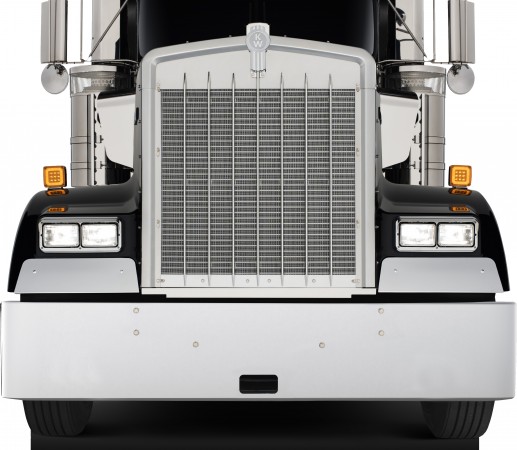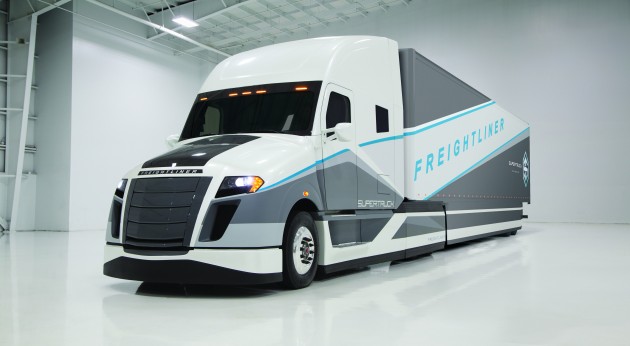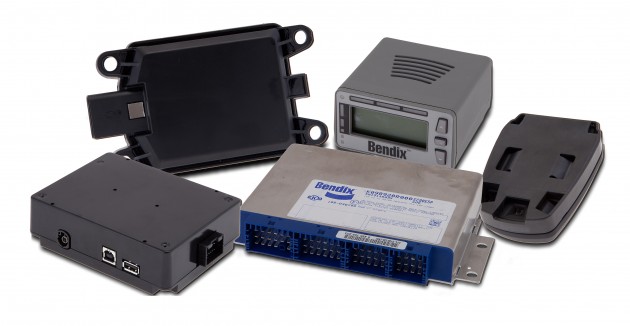THREE THINGS THAT BLEW ME AWAY AT MATS
The collection of trucks and equipment on display at the Mid-America Trucking Show, as always, provided sensory overload for truck journalists there to report on it all. At least for this truck journalist. So much to see and explore. So little time. And by early Friday, after attending more than 20 press conferences, so little energy. But that’s my problem, not yours, and I’ve fully recovered since my return.
So what caught my attention? Lots more than three things but here are three that really stood out:
Kenworth’s ICON 900
If you thought the long-nose, classic-styled, tractor was dead, think again. Kenworth breathed new life into its W900 with the launch of a limited edition ICON 900. The timing of the launch was curious, just weeks ahead of the anticipated release of Phase 2 of the joint EPA/NHTSA fuel economy standards for heavy trucks.
Those will require truck makers to meet more stringent fuel economy standards than exist today, across the breadth of their product line. They can still sell classic-styled trucks that fall short of the requirements, provided they sell enough compliant trucks to offset them. So one could argue that if this ICON 900 really takes off, Kenworth would struggle to meet its GHG17 commitments. Kenworth officials at MATS seemed unfazed by that possibility.
And there’s little risk sales of the ICON 900 will surpass that of its highly efficient T680. Still, if you asked 1,000 drivers what truck they’d rather be seen in, I’d guess more than 900 would say the ICON. It’s a gorgeous truck. Features include stainless steel fender guards, upgraded headlights, headlamp covers, under door panels and sleeper panels, grille close-out panel and large sun visor.
It is available with a 72- or 86-inch sleeper and up to 600 hp. Each ICON 900 comes with a unique signature number badge.
Freightliner’s SuperTruck
On the opposite end of the efficiency spectrum comes Freightliner’s $80-million SuperTruck, which improves freight efficiency by 115% – more than twice the original stated goal. The SuperTruck combines existing technologies with futuristic concepts and systems.
One of the neatest of these is an articulated grille with vents that open up at low speeds and when pulling a grade, when maximum cooling is required, and then close at highway speeds to provide a smooth front end.
This truck is spectacular, including the interior. About 60% of the technologies employed to achieve the 115% freight efficiency improvement are viable today, according to Martin Daum, head of Daimler Trucks North America.
You may recall Martin, in one of his first public addresses as head of DTNA, predicted the 10-mpg truck was not far off. The SuperTruck gets more than 12 mpg. They thought he was crazy at the time but that 10 mpg vision is coming closer to reality each year, and in some cases is being achieved today with the Cascadia Evolution under perfect operating conditions, Martin pointed out.
The continuing evolution of collision mitigation systems
Collision mitigation systems continue to get smarter and their potential to reduce collisions, greater. Bendix introduced its Wingman Fusion at MATS, bringing together camera- and radar-based systems that can prevent more accidents.
Among its capabilities are stationary object braking, overspeed alerts and alert prioritization. While active braking is still radar-based, meaning only metallic objects will be detected and braked for, the addition of cameras to Wingman Fusion has the potential to change that. The platform seems to be in place to add capabilities in the future that would include detection of wildlife. That’s a big deal here in Canada.
An interesting new feature of Wingman Fusion is overspeed alert, which is enabled by cameras capable of reading speed limit signs along the side of the highway. If a driver exceeds the posted speed limit by 5 mph, he or she receives a warning. At 10 mph over the limit, 10 seconds of video is captured and sent to the fleet manager for evaluation. Drivers will just love this, won’t they? Regardless, safety managers really will love it.
Wabco also introduced a new version of its collision mitigation system, OnGuardActive, which utilizes a much stronger radar and provides improved performance in adverse weather conditions.
Have your say
This is a moderated forum. Comments will no longer be published unless they are accompanied by a first and last name and a verifiable email address. (Today's Trucking will not publish or share the email address.) Profane language and content deemed to be libelous, racist, or threatening in nature will not be published under any circumstances.
There was more news at MATS regarding HD truck efficiency. Shell Lubricants has invested in Robert Sliwa’s AirFlow Truck Company to help develop their Starship tractor with the goal of reducing fuel consumption. I think these truck efficiency programs all have much in common including aerodynamics and electrification of some engine components to reduce saprophytic loads and increase efficiency.



James,
I have been reading with interest articles about the Freightliner Supertruck. I understand that this is one of three programs funded by the USDOE to improve heavy-duty truck efficiency. A comment that I have seen in these articles notes ‘electrical appliances’ and ‘electrification of engine components’ as technologies used to help reach efficiency goals. I have not seen any further explanations as to just what this is. I’m wondering if they are referring to using electric motors to run things like the AC compressor, fans, and power brake and steering instead of operating them mechanically with belts. I have seen the same type of references with Wal-Mart’s WAVE truck and AirFlow’s Bullet Truck.
Some years ago Caterpillar had their MorElectric Truck program. This was a hybridization type of approach that did use electric motors to run many engine components. What was interesting about the MorElectric truck was that it was shore power capable. Since many components were electrified it lended itself easily to using shore power as an idle reduction method. Is this the case for the Supertruck applications? Do you know if the program allows idle deduction as an approved method to help increase efficiency? It should. Looking forward, if trucks like this will represent the near future of trucking, will these trucks really be sitting in parking lots idling? There are so many reasons not to idle from economic, to emissions, to driver health that it would make sense to try to reduce idling now and in the future.
Joe Licari